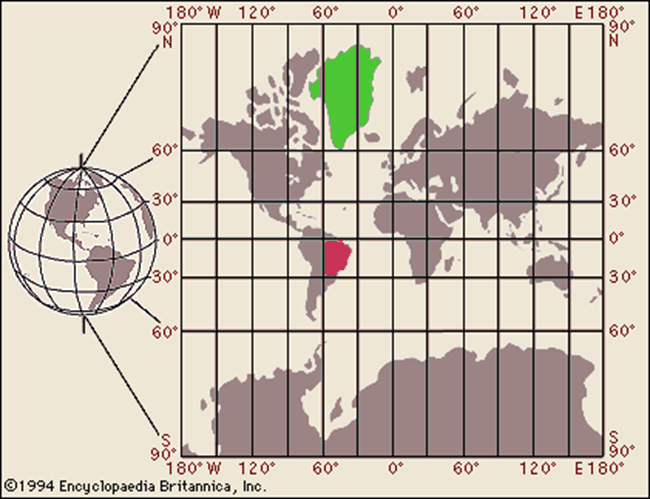First, here's a map of Europe with Ukraine in the black box.
 |
| Basic map from Infoplease |
Just to get a sense of things, Kiev is about 430* air miles from Sevastapol. Here are some other cities that are about the same distance apart.
| Paris to Munich New York to Detroit Mumbai to Bhopal St. Louis to Ann Arbor Hanoi to Chiengmai Seattle to Calgary* |
I understand that Russia's action is a big deal. But it's also, apparently, a common event in this region. From Wikipedia:
Crimea, or the Crimean Peninsula, located on the northern coast of the Black Sea, currently under the jurisdiction of Ukraine, has a history of over 2000 years. The territory has been conquered and controlled many times throughout this history. The Cimmerians, Greeks, Scythians, Goths, Huns, Bulgars, Khazars, the state of Kievan Rus', Byzantine Greeks, Kipchaks, Ottoman Turks, Golden Horde Tatars and the Mongols all controlled Crimea in its early history. In the 13th century, it was partly controlled by the Venetians and by the Genovese; they were followed by the Crimean Khanate and the Ottoman Empire in the 15th to 18th centuries, the Russian Empire in the 18th to 20th centuries, the Russian Soviet Federative Socialist Republic and later the Ukrainian Soviet Socialist Republic within the Soviet Union. In 1991 it became part of independent Ukraine, as the Autonomous Republic Crimea.And while there will be calls for the US President to take decisive action, it makes sense to look at the geography of the Crimean Peninsula first. It's almost inside Russia. It's as close as Mexico to the US. You know how the US would respond to a military incursion by Russia or China in Mexico. Russians will respond the same way. Realistically, there's not a lot we can do militarily that wouldn't cause far more harm than doing nothing. (But then Iraq and Afghanistan are distant memories for many.) Our response will have to be patient and more nuanced than missiles and bombs. First we should look at maps and maybe read some history. Diplomacy and economics will be far more effective weapons in the long term.
We tend to remember a place first by our own involvement in it. If Americans know anything about the region, it's from Yalta and from the Crimean War, whose lasting legacies through the English to the US, include Florence Nightingale, and the Charge of the Light Brigade, a terrible debacle for the British.
Written 1854
Half a league half a league,
Half a league onward,
All in the valley of Death
Rode the six hundred:
'Forward, the Light Brigade!
Charge for the guns' he said:
Into the valley of Death
Rode the six hundred.
'Forward, the Light Brigade!'
Was there a man dismay'd ?
Not tho' the soldier knew
Some one had blunder'd:
Theirs not to make reply,
Theirs not to reason why,
Theirs but to do & die,
Into the valley of Death
Rode the six hundred.
Cannon to right of them,
Cannon to left of them,
Cannon in front of them
Volley'd & thunder'd;
Storm'd at with shot and shell,
Boldly they rode and well,
Into the jaws of Death,
Into the mouth of Hell
Rode the six hundred.
Flash'd all their sabres bare,
Flash'd as they turn'd in air
Sabring the gunners there,
Charging an army while
All the world wonder'd:
Plunged in the battery-smoke
Right thro' the line they broke;
Cossack & Russian
Reel'd from the sabre-stroke,
Shatter'd & sunder'd.
Then they rode back, but not
Not the six hundred.
Cannon to right of them,
Cannon to left of them,
Cannon behind them
Volley'd and thunder'd;
Storm'd at with shot and shell,
While horse & hero fell,
They that had fought so well
Came thro' the jaws of Death,
Back from the mouth of Hell,
All that was left of them,
Left of six hundred.
When can their glory fade?
O the wild charge they made!
All the world wonder'd.
Honour the charge they made!
Honour the Light Brigade,
Noble six hundred!
The Charge Of The Light Brigade
by Alfred, Lord Tennyson
Memorializing Events in the Battle of Balaclava, October 25, 1854
Written 1854
Half a league half a league,
Half a league onward,
All in the valley of Death
Rode the six hundred:
'Forward, the Light Brigade!
Charge for the guns' he said:
Into the valley of Death
Rode the six hundred.
'Forward, the Light Brigade!'
Was there a man dismay'd ?
Not tho' the soldier knew
Some one had blunder'd:
Theirs not to make reply,
Theirs not to reason why,
Theirs but to do & die,
Into the valley of Death
Rode the six hundred.
Cannon to right of them,
Cannon to left of them,
Cannon in front of them
Volley'd & thunder'd;
Storm'd at with shot and shell,
Boldly they rode and well,
Into the jaws of Death,
Into the mouth of Hell
Rode the six hundred.
Flash'd all their sabres bare,
Flash'd as they turn'd in air
Sabring the gunners there,
Charging an army while
All the world wonder'd:
Plunged in the battery-smoke
Right thro' the line they broke;
Cossack & Russian
Reel'd from the sabre-stroke,
Shatter'd & sunder'd.
Then they rode back, but not
Not the six hundred.
Cannon to right of them,
Cannon to left of them,
Cannon behind them
Volley'd and thunder'd;
Storm'd at with shot and shell,
While horse & hero fell,
They that had fought so well
Came thro' the jaws of Death,
Back from the mouth of Hell,
All that was left of them,
Left of six hundred.
When can their glory fade?
O the wild charge they made!
All the world wonder'd.
Honour the charge they made!
Honour the Light Brigade,
Noble six hundred!
From the National Center.
*I got most of these from Time and Date's distance tables which are air miles.


.jpg)
























